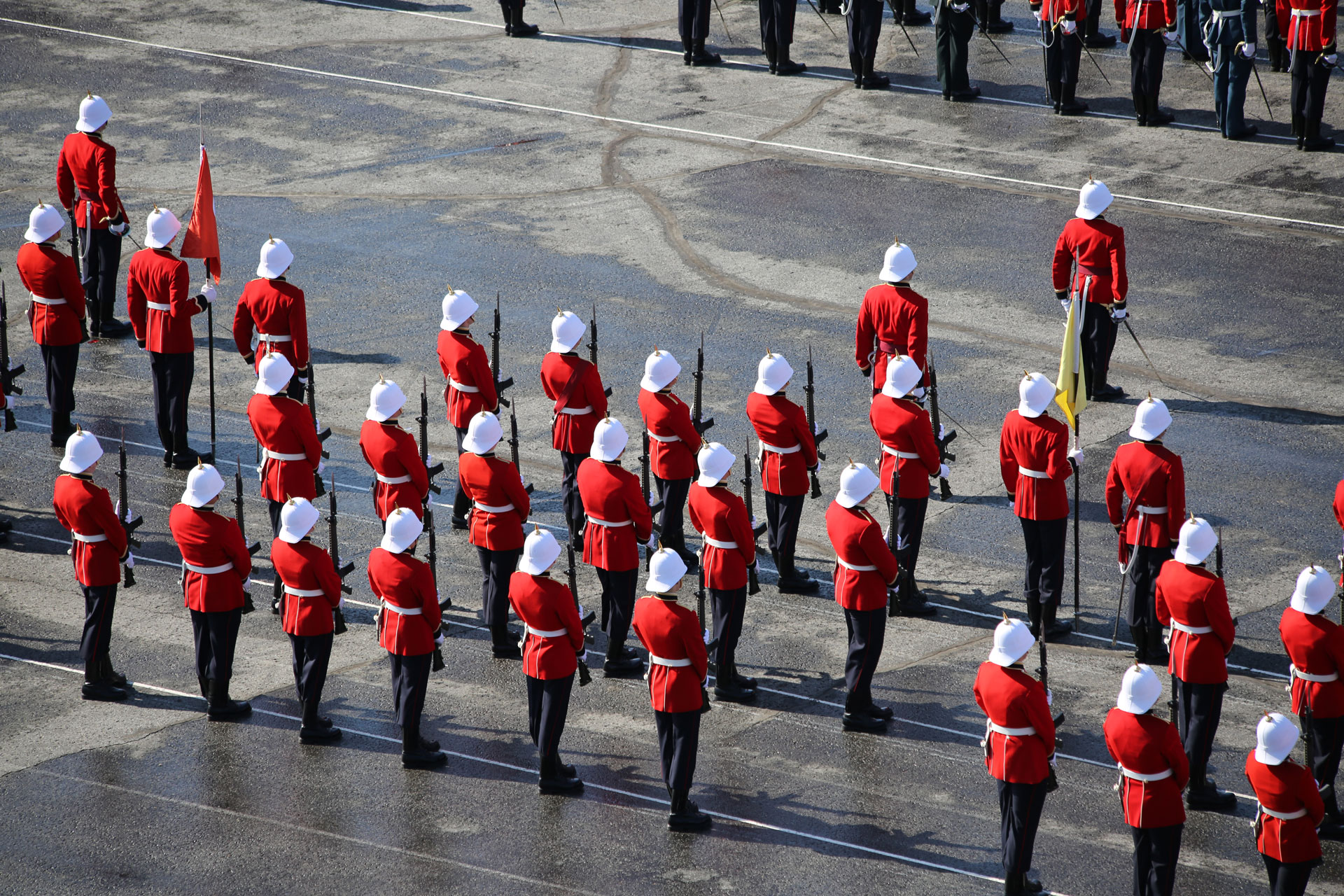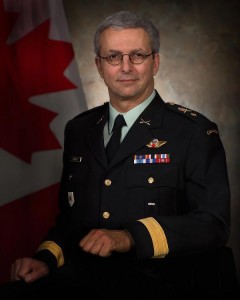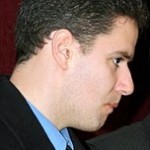
Master’s Thesis Oral Examination
Examen oral de thèse de maîtrise
Electrical and Computer Engineering Department
Département de génie électrique et de génie informatique
Capt Matt Cossaboom
Supervisor/Superviseur: Dr. Aboelmagd Noureldin
Time/ Heure: 14:30hrs/14h30
Monday/ Lundi 21 March / mars 2011
Location / Endroit Swing Space 4200
Résumé
Intégration du GPS avec les systèmes de navigation inertielle par un filtre de Kalman augmenté avec la corrélation de cartes pour les véhicules terrestres
Dans le domaine de la navigation, il y a une demand croissante d’applications de positionnement et de navigation à faible coût, telles les systèmes de navigation de véhicule terrestre et les systèmes de navigation de soldat débarqué. Au plan mondial, le GPS (Global Position System) est fréquemment utilisé pour une multitude d’applications. C’est un système fiable sauf dans les canyons urbains et les tunnels, ou les signaux satellites sont bloqués ou brouillés par l’effet des trajets multiples créant ainsi une panne du GPS. C’est là que l’intégration du GPS avec une INS (Inertial Navigation System) à base de systèmes microélectromécaniques (MEMS) devient utile. La méthode d’intégration traditionnelle est l’utilisation du filtre de Kalman (FK). Dans cette méthode, le FK prédit les erreurs de position et de vitesse de l’INS pendant la panne du GPS; ces erreurs sont ensuite soustraites à la sortie de l’INS pour ainsi avoir une information précise de la position et de la vitesse données par l’INS.
Le FK utilise un modèle linéarisé du système et possède plusieurs limitations. Le FK nécessite un modèle stochastiques des erreurs des capteurs inertiels et une connaissance apriori de la covariance des données de l’INS et du GPS. De plus, la méthode du FK génère des divergences durant une panne du GPS à cause des approximations faites lors de la linéarisation; ce problème est accentué lorsque l’on utilise des INS à base MEMS. Ainsi, les erreurs de position et de vitesse de l’INS ont la possibilité de croître considérablement; d’ou la croissance récente de l’attention apportée au développement de méthode alternative d’intégration INS/GPS – tous ayant comme but commun de réduire l’impact des facteurs limitant du FK et d’améliorer la précision du positionnement lors de longue panne du GPS. Plusieurs approches récentes ont été proposées pour l’intégration INS/GPS. Soit qu’elles remplacent totalement le FK, tels le filtrage particulaire et l’intelligence artificielle; soit qu’elles augmentent le FK pour améliorer sa perfomance, tels les réseaux de neurones et les modules neuro-flous.
Puisque le FK est la méthode traditionnelle, et la moins complexe, cette recherche va se concentrer à diminuer les erreurs de la méthode du FK en l’augmentant à l’aide de la corrélation de care (CC). La CC va limiter l’accroissement des erreurs durant les pannes de GPS en restreignant les positions prédites à des positions possibles sur le réseau routier de la carte. L’augmentation par la CC se fera en implémentant une carte routière détaillée électronique dans le processus d’intégration. Cette méthode sera évaluée en utilisant de vraies trajectoires d’autoroute et de canyons urbains. Cette thèse se concentra d’abord sur l’hybridation lâche par filtrage de Kalman linéarisé, puis elle comparera ses résultats avec d’autres méthodes alternatives d’intégration.
Abstract
Augmented Kalman Filtering and Map Matching for INS/GPS Integration for Land Vehicles
In the world of navigation there is a growing demand for low-cost positioning/ navigation applications such as land vehicle navigation and dismounted soldier navigation. Global position system (GPS) is being very widely used across the world for several applications. It is a reliable system except for places like urban canyons and tunnels due to the blockage of the satellite signals and multipath effects. This is where the integration of GPS and micro-electromechanical system (MEMS) based inertial navigation system (INS) becomes useful. The traditional method of integration uses the Kalman filtering (KF) method. The KF predicts INS position and velocity errors during GPS outages that are then removed from the output of the INS in order to obtain accurate position and velocity information.
KF uses a linearized system model and has several limitations. It requires a stochastic model of the inertial sensor errors and a priori information about the data covariance provided by both INS and GPS. KF techniques suffer from divergence during outages due to approximations during the linearization process, esoecially when utilizing MEMS based Inertial Measurement Units. As a result, the INS position and velocity errors could grow quite significantly.Consequently, the developments of alternative INS/GPS integration methods have received more attention with the common goal of reducing the impact of the limiting factors and improving the positioning accurancy during long GPS signal outages. New INS/GPS approaches have been recently suggested. They are either totally replacing KF like particle filtering and artificial intelligence or augmented by KF to enhance its performance like neural networks or neuro-fuzzy modules.
Since KF is the traditional and least complex method of integration, this research will focus on reducing the KF integration errors by augmenting it with Map Matching (MM). MM will limit the error growth during GPS outages by restricting the predicted positions to the road networks. This will be completed by implementing accurate digital maps of the road networks to the integration process. The developed method will be examined through real road tests trajectories in both highway areas and urban canyons. This thesis research will focus initially in the area of loosely coupled INS/GPS integration using KF and compare the results to other alternative methods of integration.
_________________________________
Dr. Timothy Winegard is a Canadian historian, educator and scholar

Reserched by E3161 Victoria Edwards
_________________________________
13049 Alain Tremblay to Join Rheinmetall Canada …

“Alain Tremblay is a respected leader who has served Canadians with distinction at home and abroad,” said the President and Chief Executive Officer of Rheinmetall Canada, Dr. Andreas Knackstedt. “He brings the operational experience and understanding of army requirements that will help our company better equip and protect members of the Canadian Forces, as well as those of other friendly nations.”
Brigadier-General Tremblay recently announced his retirement from the Canadian Army, completing a distinguished career of close to 34 years, including commanding forces during operations in Afghanistan and Bosnia. In Canada, he made important contributions to the future of the Canadian military during his assignments in the Canadian Forces Transformation Team, as the Director General Land Capability Development, and as Senior Policy Advisor at the Privy Council Office. General Tremblay retires from his current post as Commander of Land Force Quebec Area and Joint Task Force East where he led the activities of more than twelve thousand personnel.
“I am excited to join an innovative and dynamic company such as Rheinmetall who is keen to provide the best equipment to our military men and women”, said Tremblay. “This is a world-class company known for getting things done and has delivered results to the Canadian Forces and many of our allies. I look forward to contributing to the continued success of Rheinmetall in Canada. ”
Brigadier-General Tremblay will take his new position on March 7th. He will make the transition to his new responsibilities with the same integrity and professionalism displayed during his military career by respecting all Government of Canada and Canadian Forces rules for former public office holders.
About Rheinmetall Canada
With engineering and production facilities in Saint-Jean-sur-Richelieu and a business development office in Ottawa, Rheinmetall Canada is renowned for its expertise in the design and manufacturing of defence electronics, weapon systems, and vehicle integration for both domestic and international customers. For the Canadian Forces, the company is the prime contractor on several key programs, including the repair and overhaul of the Leopard 2 A4 training tanks and the close area suppression weapon – the army’s digitized 40 mm grenade launcher. Source


